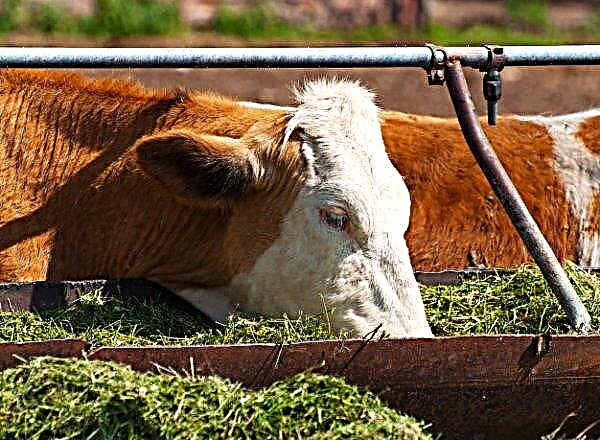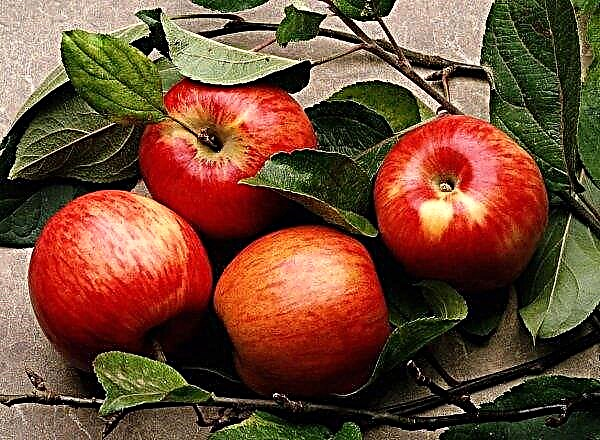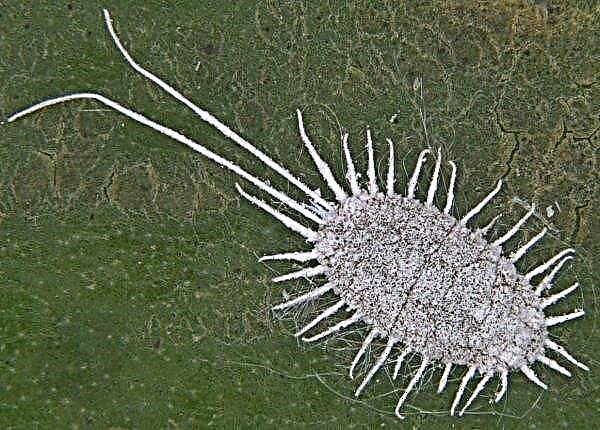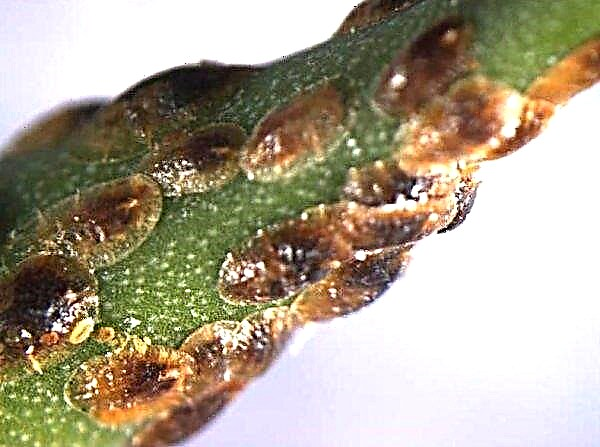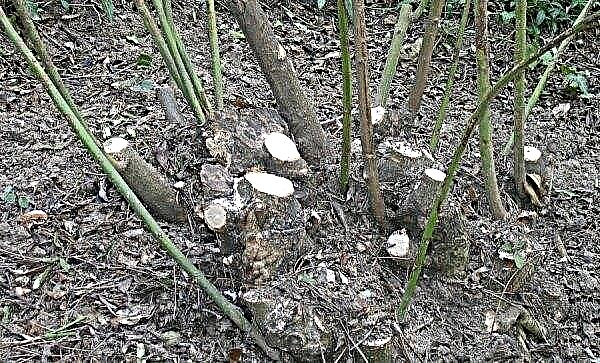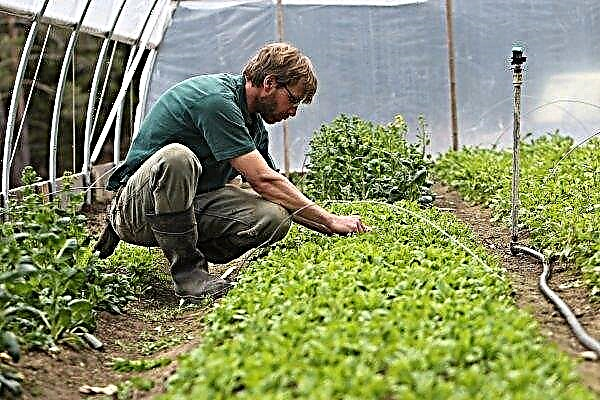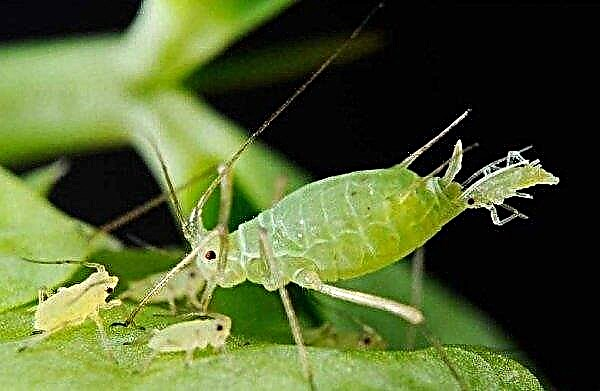Getting large yields of watermelons is possible if you provide them with the right conditions for development. To do this, you need light nutrient soil, sun and water. About what to feed watermelons, the rules and timing of feeding and will be discussed in this review.
Why do I need to feed watermelons?
Plant growth occurs through the use of solar energy and the nutrients that are found in the earth. Organic substances, including manure, bird droppings, bone meal, algae, compost and others, have the ability to accumulate nutrients - nitrogen, phosphorus, potassium, magnesium, and then store them until they are needed by the plant. Therefore, in fertile, well-fertilized soil, productivity increases by 30–40%.
In the process of development, the plant consumes nutrients from the soil, while depleting it. Watermelons are highly active consumers in this regard. They extremely quickly deplete the site on which they grow and therefore need additional nutrition, starting from the planting stage.
You can use organic and inorganic fertilizers:
- in granules for the gradual release of nutrients;
- in liquid form for quick absorption.

These substances are characterized by the following qualities:
- Nitrogen helps to produce proteins necessary for the growth of new plant tissues, i.e. to increase the size of the plant. An excess of nitrogen is manifested in the abundance of foliage and the absence of ovaries. The disadvantage is manifested in the poor development of the plant as a whole.
- Phosphorus stimulates root growth, helps watermelon to form ovaries. In order to be able to absorb phosphorus, it is required to grow in the soil with acidity - from 6.5 to 6.8 pH. With a different acidity, phosphorus will not be absorbed. Lack of phosphorus is manifested in small leaves and a bluish shade of foliage.
- Potassium involved in the production of carbohydrates, which provides resistance to disease. It is also necessary for cellular metabolic processes. Its lack is manifested in the yellowing of the ends of the leaves and their thinning.
Did you know? AT It is generally accepted to eat the flesh of watermelon. But its peel is also edible and full of nutrients. In China, the peel is fried or stewed, and in the south, cooks like to pickle it.
Whatever type of fertilizer you choose, be sure to read the instructions on the label and apply them in accordance with the stage of development of watermelons. Each stage has its own nutritional needs.
| Growth period | Nutrition Requirements in g / day | ||
| Nitrogen | Phosphorus | Potassium | |
| From planting to flowering | 1,2 | 0,2 | 1,2 |
| From flowering to fruit formation | 3,0 | 0,3 | 2,0 |
| From fruit formation to fruit growing | 5,0 | 0,3 | 4,0 |
| From growing a fruit to harvesting | 1,0 | – | 1,0 |
Feeding Methods
Fertilizers are introduced into the root zone:
- in dry form;
- along with water.
Feeding is absorbed through the roots, while simultaneously affecting the development of the whole plant as a whole. It can be applied before planting or after, by scattering dry matter on the surface of the soil or together with watering. Nutrient juices rise in the plant from the bottom up. Therefore, the fertilizer will be equally accessible to the roots and leaves, but when spraying the leaves, useful substances will not get to the roots. The second method is foliar top dressing. It is carried out by spraying the leaves. It is aimed at improving the quality of ovaries and leaf mass. Spraying is possible with a hand sprayer or aerosol cans. Water-soluble fertilizer is usually applied to leaves when a lack of nutrients becomes noticeable, as well as during a drought when the soil is too dry to absorb nutrients.
The second method is foliar top dressing. It is carried out by spraying the leaves. It is aimed at improving the quality of ovaries and leaf mass. Spraying is possible with a hand sprayer or aerosol cans. Water-soluble fertilizer is usually applied to leaves when a lack of nutrients becomes noticeable, as well as during a drought when the soil is too dry to absorb nutrients.
Whatever method of feeding was chosen, the composition should include:
- nitrogen;
- phosphorus;
- potassium.
Root dressing
Root dressing is applied directly to the soil in the zone of root development. Its dignity is the ease of application.
Did you know? The heaviest watermelon recorded by the Guinness Book of Records weighed about 180 kg. It was grown in Tennessee in 2013.
Other advantages of such top dressing are also noted:
- you can not overdo it, because the plant will absorb the minerals gradually at the desired pace;
- no need for additional devices for making;
- There are no special mandatory deposit rules;
- fertilizers can be organic or mineral, of your choice.

Foliar top dressing
Foliar top dressing is applied to the leaves using special sprayers. It is relevant if, for any reason, the roots cannot absorb fertilizers.
Its advantages:
- indispensable for enhancing flowering and the formation of ovaries, as Delivers the maximum amount of nutrients directly to the area to be affected;
- it is more effective during a slowdown in metabolism - in heat, drought or in heavy rains;
- necessary during the period of intensive development of leaves and stems.
But there are a number of disadvantages. So, you can easily overdo it with the dosage and “burn” the leaves of the watermelon. Also, you cannot make organic fertilizers in this way. Therefore, foliar top dressing is considered an auxiliary, but not the main way of making minerals. Nozzle on a bottle for spraying plants
Nozzle on a bottle for spraying plants
Variety of Feeding
Is there a difference between organic and synthetic watermelon dressings? Yes, because they contact the plant in different ways and provide it with a different set of substances. The peculiarity of organic fertilizers is that the substances that they contain do not dissolve in water, and are also slowly released. It may take several months or years to fully release. That is why organics are best used in the fall under watermelons that you plant in the spring.
Organics stimulate the activity and development of beneficial soil microflora, thereby improving the structure of the soil. Organic fertilizers always contain not only the main minerals, but also the secondary elements needed by plants: sulfur, magnesium, iron, calcium and others. Synthetic fertilizers quickly dissolve in water and are absorbed by the plant immediately. But their excess can “burn” leaves or roots and damage plants. They give an impetus to development, but do not improve the structure of the soil and do not enhance its fertility.
Did you know? Watermelons are an excellent source of lycopene, an antioxidant that reduces the risk of certain types of cancer, including prostate, lung and stomach cancer.
Good solubility in water also creates disadvantages: they can easily be washed out of the soil during rain or heavy watering. But synthetic fertilizers have benefits for early crops. When the soil is not sufficiently warmed up and the soil microorganisms are inactive, the organic matter is poorly absorbed. And in order to deliver food, it is necessary to use synthetic fertilizers. For long-term soil health, manure or compost is mandatory. This will create a base rich not only in beneficial substances, but also in beneficial microorganisms.
Mineral fertilizers
Minerals are fertilizers obtained from compounds of inorganic origin.
They are divided into three main macroelements:
- phosphoric;
- potash;
- nitrogen.
Nitrogen
Nitrogen fertilizer is a combination of hydrogen and nitrogen under conditions of high temperature and pressure. Weak plants with pale foliage may indicate a lack of nitrogen in the soil. The most common representative of this group is urea. It is used to stimulate the growth of watermelons. It contains at least 40% nitrogen.
Suitable for use on any type of soil. It is highly soluble in water and can be fixed in the ground. This means that watermelon will be available, even if it rains for a long time and there is a risk of leaching of other fertilizers from the soil. The rate of application of the substance is 5-10 g / m² during the growing season. Gardeners also use ammonium nitrate - this is another fertilizer of this group. It provides watermelon with nitrogen during a period of intensive growth, as well as:
It provides watermelon with nitrogen during a period of intensive growth, as well as:
- affects the rapid development of roots;
- enhances the absorption of nutrients;
- prevents yellowing of leaves.
Did you know? In Japan, farmers grow cubes in the form of watermelons. The original idea was to grow a watermelon, which would be better placed in the refrigerator. The berry takes this form because it is placed in a special form during growth.
Nitrogen fertilizer with sulfur is intended for plants that need an increased proportion of sulfur. In addition, thanks to sulfur, a better environment is formed in acidic soils for the development and formation of roots, absorption of nutrients and the spread of beneficial microorganisms.
Phosphate
Phosphorus deficiency is generally not as easy to recognize as deficiency of other nutrients. Such a plant will be stunted, with a thin stalk. Its foliage is often dark, almost bluish, dark green. Against the background of completely healthy plants, those with a phosphorus deficiency look quite normal. In severe cases, phosphorus deficiency can cause yellowing and aging of leaves.
The need for phosphorus fertilizers is also due to the fact that the level of its content in the soil is extremely low. In addition, those compounds that are available cannot be assimilated in their pure form. Therefore, the introduction of phosphorus is mandatory. Soluble phosphates are mainly used to fertilize plants.
- Ammophos - An active, rapidly digestible fertilizer for plants. It consists of monoammonium and diammonium phosphate. The application rate is 25 g / m². It is applied in soil in the spring or in the fall. Phosphates are long-playing fertilizers, and when used this season, watermelon will absorb only 15% of the phosphorus invested in them, and the rest will be ready for absorption next year. Therefore, the more regular feeding is done, the greater the yield in subsequent seasons.
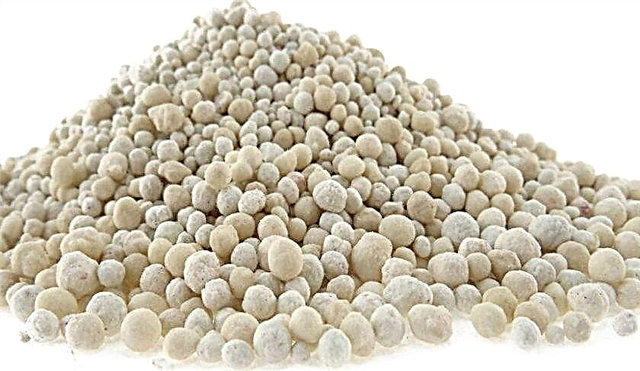
- Superphosphate is a fertilizer with a high phosphorus content (from 16 to 50%). Suitable for use on any soil in the spring digging of the soil or in the fall. Simple superphosphate is designed to increase soil or compost fertility. Its application rate is 45 g / m².
Potash
Previously, potassium was leached from wood ash and concentrated by evaporation of the filtrate in large iron pots. Therefore, ash is a natural source of potassium for your watermelons.
Did you know? 50 years ago seedless watermelons were first created. They have immature white seeds that are absolutely safe to eat.
If its stock in the soil is limited, then for crops are characteristic:
- low productivity;
- low quality of watermelons obtained due to inefficient use of water by plants;
- susceptibility to disease.
- Potassium chloride - The cheapest and easiest fertilizer of this group. Many crops respond favorably to the use of chlorides with high yields and quality.
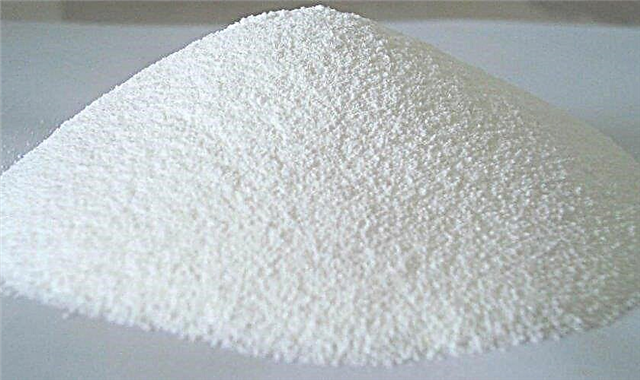
- Potassium sulfate - It is a sulfur-added fertilizer useful for the production of proteins and enzymes. Potassium-magnesium sulfate improves metabolism and is involved in the formation of chlorophyll. Magnesium deficiency is manifested by yellow leaves at the bottom of the plant. On this basis, you can determine the need for such a dressing.
- Potassium nitrate Are potash fertilizers with nitrogen. If you use nitrogen separately, then you do not need to make such feeding so as not to exceed the concentration of nitrogen in the soil. When deciding which fertilizer to use, choose one that meets the needs of your soil and growing plants.
Organic watermelon dressing
To be considered organic fertilizer, substances must naturally occur in nature. They can come from plant, animal or mineral sources and can be used, depending on the needs of the plantation.
This group includes:
- manure;
- peat fertilizers;
- seaweed;
- compost;
- straw;
- green fertilizers;
- and other types of organics.
 In addition, they positively affect the structure of the soil and soil microorganisms. And it also enhances the absorption of feed and the yield of watermelons. The composition of any organic substance contains obligatory nitrogen, phosphorus and potassium, as well as a number of other minerals that can improve the properties of the soil.
In addition, they positively affect the structure of the soil and soil microorganisms. And it also enhances the absorption of feed and the yield of watermelons. The composition of any organic substance contains obligatory nitrogen, phosphorus and potassium, as well as a number of other minerals that can improve the properties of the soil.Vegetable
Plant-based fertilizers are destroyed faster than other organic substances. They are great for soil conditioning. Plant-based substances include: alfalfa flour, compost, ground cover crops (green fertilizers). Compost is obtained from the remains of vegetables, foliage, herbs and other materials.
Important! It is forbidden to add meat, fat and bone products to compost residues. This attracts parasites, slugs and can become a source of infection for your plants.
This type of fertilizer has many advantages:
- improves soil structure;
- increases airflow to the roots;
- helps retain water;
- stabilizes the pH level;
- supports the vital activity of soil bacteria.
 Algae flour (kelp) is rich in potassium and some trace elements. It speeds up the growth of watermelons and increases their stamina. It can also be added to compost or soil. The ratio of nitrogen, phosphorus and potassium in it (in%) is 2-4-10. Consumption: 1 kg / 100 m². Sawdust and wood ash are a good source of potassium for the soil.
Algae flour (kelp) is rich in potassium and some trace elements. It speeds up the growth of watermelons and increases their stamina. It can also be added to compost or soil. The ratio of nitrogen, phosphorus and potassium in it (in%) is 2-4-10. Consumption: 1 kg / 100 m². Sawdust and wood ash are a good source of potassium for the soil.In addition, sawdust makes the soil more loose, which is useful for heavy alumina. To speed up the process of decomposition of sawdust, they are treated with slurry and composted for 6 months. An excellent source of organics are siderat plants.
These are crops that are planted on beds after the main crop is harvested:
- cereals;
- legumes;
- rape;
- and other cultures.

Animals
Fertilizers of animal origin include substances obtained from waste from the meat and dairy industry, as well as feces. The percentage of nutrients contained in them is approximate and depends on many factors.
- Feather flour releases nitrogen for 140 days. Added to compost. The ratio of nitrogen, phosphorus and potassium in it (in%) is 13-0-0. It is applied to the surface layer of the soil in dry form. Consumption: 5 kg / 100 m².
- Meat and bone meal characterized by a high content of nitrogen and phosphorus. Also introduced in spring digging with compost. The ratio of nitrogen, phosphorus and potassium in it (in%) is 8-4-0. Consumption: 5 kg / 100 m². Bone meal is characterized by the presence of a large dose of phosphorus, as well as calcium. Used at the beginning of the growing season, during sowing seeds or planting seedlings. 50% of the fertilizer applied is decomposed in the first year, and the rest after 4 years. The ratio of nitrogen, phosphorus and potassium in it (in%) is 2-22-0. Consumption: 5 kg / 100 m².
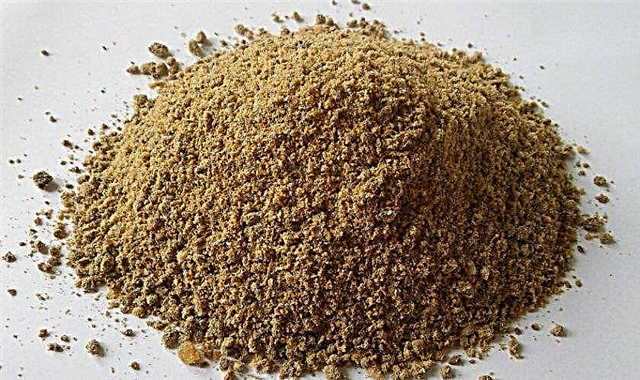
- Fish emulsion can be used to stimulate strong growth in the spring or to correct deficiencies throughout the growing season. Used in the form of an aqueous solution for spraying. The ratio of nitrogen, phosphorus and potassium in it (in%) is 5-1-1. The proportion of phosphorus may be greater. Consumption: 10 ml / 1 liter of water.
- Manure also a substance of animal origin. Manure obtained from various animals is used as fertilizer: cows, sheep, birds, horses and others. It is known as the most complete fertilizer. When using manure, it is important to know that it cannot be used fresh, so as not to burn the roots of plants. Apply one that has been lying for at least 6 months since its inception.
Important! Since bone meal attracts animals and some insects, farmers prefer to replace it with mineral phosphates. They contain about 27% phosphorus, but only 7% of them will be digested this year. Therefore, phosphorus always contribute more than required.
Watermelon dressing folk remedies
Knowledge of the chemical composition of fertilizers has enriched agriculture relatively recently. Prior to this, people simply noticed the beneficial effect of certain substances on plant growth and productivity. Among such funds are yeast top dressing and ammonia. They also stimulate growth and heal the soil.
Yeast
Yeast is tiny unicellular fungi that can be in the air or soil in the form of spores invisible to the eye. About 1,500 species of yeast are known. They found their application not only in cooking, but also in the garden. Useful properties of yeast:
Useful properties of yeast:
- They speed up compost preparation very well. Just pour them a compost pile.
- They induce plants to enhance flowering. To do this, prepare a solution of 3 tbsp. tablespoons of yeast dissolved in 10 liters of water. Water the plants as soon as the flowers appear.
- Spraying plants with yeast contributes to the additional attraction of pollinating insects.
Did you know? Using yeast will also help in pest control. 1 attracted ladybug is able to eat up to 5,000 aphids during its lifetime.
Ammonia
Ammonia is a source of nitrogen compounds. The low cost of such fertilizer makes it still relevant when applied to personal plots. Add 1 cup ammonia to 1 liter of water. Add additional ingredients to the mix as you wish. The composition is diluted in 100 l of water and sprayed onto watermelons. This fertilizer is convenient to water the plantation every 3-4 weeks. Useful properties of feeding with ammonia:
Useful properties of feeding with ammonia:
- promotes growth and improves fruiting;
- enhances photosynthesis;
- makes the soil more alkaline, which is good for heavy clay soils.
Important! Ammonia will damage plants if you are not sure about the need for such nutrition, including Do not know the level of acidity of the soil. In large quantities, alcohol can burn the roots. In addition, it is also able to turn into nitrates, harmful to the human body.
Watermelon Fertilizer Scheme
There are no strict fertilizer schedules for watermelons. The need for application is determined by the type of soil and the stage of growth of watermelon. A sprout and a flowering plant have different needs. Nitrogen must be added at the very beginning to ensure good growth and development. As soon as the watermelons bloom, they will need phosphate-potassium fertilizers. The same components are needed to get the fruits of higher quality and size.
When sowing seeds
If you do not know the level of soil acidity and the content of mineral substances in it, then when planting you need to make fertilizer in which nitrogen, phosphorus and potassium are in the following percentage ratio: 5-10-10. The application rate is 7–8 kg per 150 m². Fertilizer must be thoroughly mixed with the topsoil.
You can choose both organic and inorganic fertilizer. But it is recommended to make compost or rotted manure. They are a kind of pantries, from which the watermelon will choose nutrients as it grows. The compost rate is 0.5 buckets per 1 m². soil. In addition, some farmers simply prefer to make a mound of compost and plant seeds on it. Clayy dense soils often have an increased level of acidity. To deoxidize such soils, the introduction of dolomite flour or lime is required. This process must necessarily be at least 3 weeks from the date of feeding. This is necessary so that the lime does not neutralize the nitrogen in the fertilizers that you apply.
Clayy dense soils often have an increased level of acidity. To deoxidize such soils, the introduction of dolomite flour or lime is required. This process must necessarily be at least 3 weeks from the date of feeding. This is necessary so that the lime does not neutralize the nitrogen in the fertilizers that you apply.
Important! Watermelon seeds germinate easily and quickly. They only need a few days. They really don't like transplants. Therefore, saving a few days for the ripening of the crop thanks to the seedling method, you will get a weaker plant, and therefore not a high crop.
When planting seedlings
After planting, fertilizers continue to be applied in the same scheme 5-10-10 until the appearance of flowers.
There are several schemes by which watermelons are fed:
- feed watermelons weekly; as soon as the vines become long enough and begin to crawl, at the end of the growth of the vines make a large dose of fertilizing with nitrogen (33-0-0);
- feed twice - the first time 2 weeks after planting in the ground, and the second - 14 days after the first.
 Approximate fertilizer application rates:
Approximate fertilizer application rates:- nitrogen - 130-150 g;
- phosphorus - 130-150 g;
- potassium - 260 g.
During flowering
In the growth phase of vines, watermelons are fed with balanced fertilizers (20-20-20). Do not forget that all fertilizers are applied to wet soil after watering. It helps to absorb nutrients.
Did you know? It is generally accepted that watermelon is a fruit because of its sweet taste, but in fact, watermelon — it is a vegetable. It belongs to the pumpkin family and is a close relative of pumpkins and cucumbers.
At the beginning of fruiting
When the first fruits begin to appear on the vine, top dressing with a large dose of nitrogen is repeated (33-0-0). If you see that the greens are too lush, and there are few ovaries, then replace this top dressing with the usual balanced one or exclude nitrogen from it if there are no ovaries. Next, fertilizing with a high content of potassium is regularly carried out.
Additional recommendations
It should be noted that any top dressing should take into account the actual condition of the plant and soil, and not the "average pattern". Watermelon - consumes nutrients very actively. Therefore, without dressing, you will get a very low yield.
To prevent this from happening, you need to:
- Be sure to apply organic fertilizers when planting seeds or seedlings in the ground.
- Regularly visually assess the development of plants, evaluate the timeliness of the appearance of leaves or flowers.
- If the plant is weak with thin vines - feed it and make sure there are no diseases and pests.
- If the plant is very lush, then you do not need to feed it, and it is advisable to wash off the "excess" fertilizers that are in the soil into the lower layers of the soil.
- Observe the timing of fertilizer application: in the phase of growth, flowering and fruit formation; late application of top dressing can lead to a complete absence of ovaries.
- Do not bring the dry mixture after planting - this will lead to an uneven flow of nutrients to the vines; minerals cannot move around the site themselves and must be delivered with water.
 Proper application of fertilizing is not only a good harvest, but also healthy microflora in your beds. Remember that you can use any fertilizer, the main thing is to comply with the norms and timing of application, since throughout the growing season, watermelons require a lot of nutrients.
Proper application of fertilizing is not only a good harvest, but also healthy microflora in your beds. Remember that you can use any fertilizer, the main thing is to comply with the norms and timing of application, since throughout the growing season, watermelons require a lot of nutrients.





